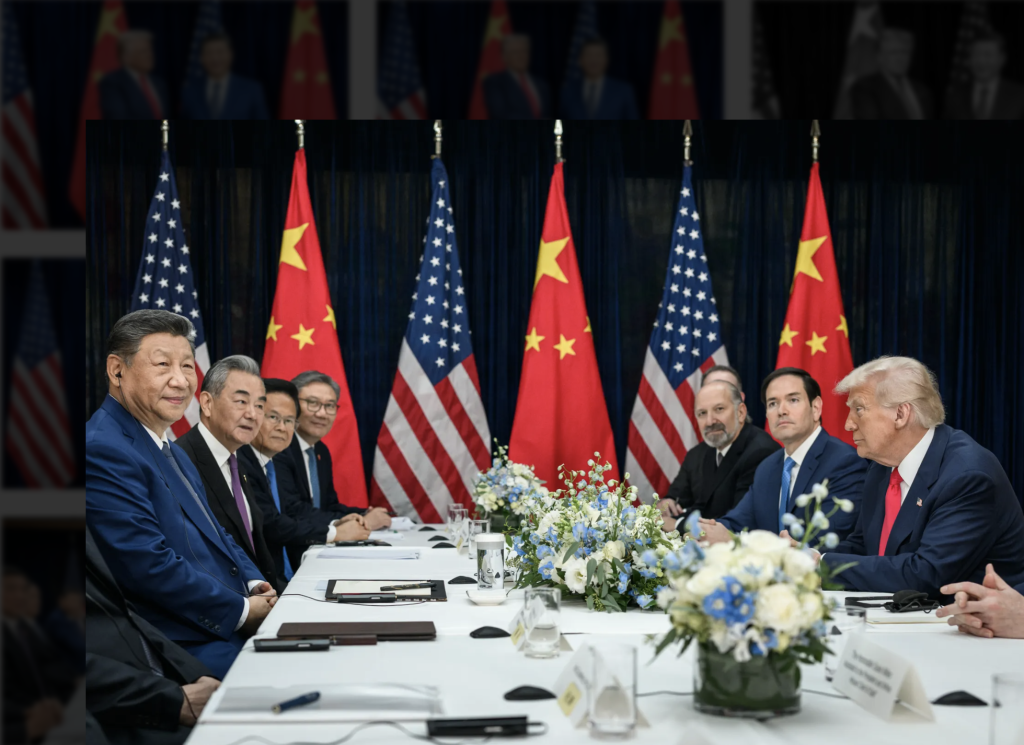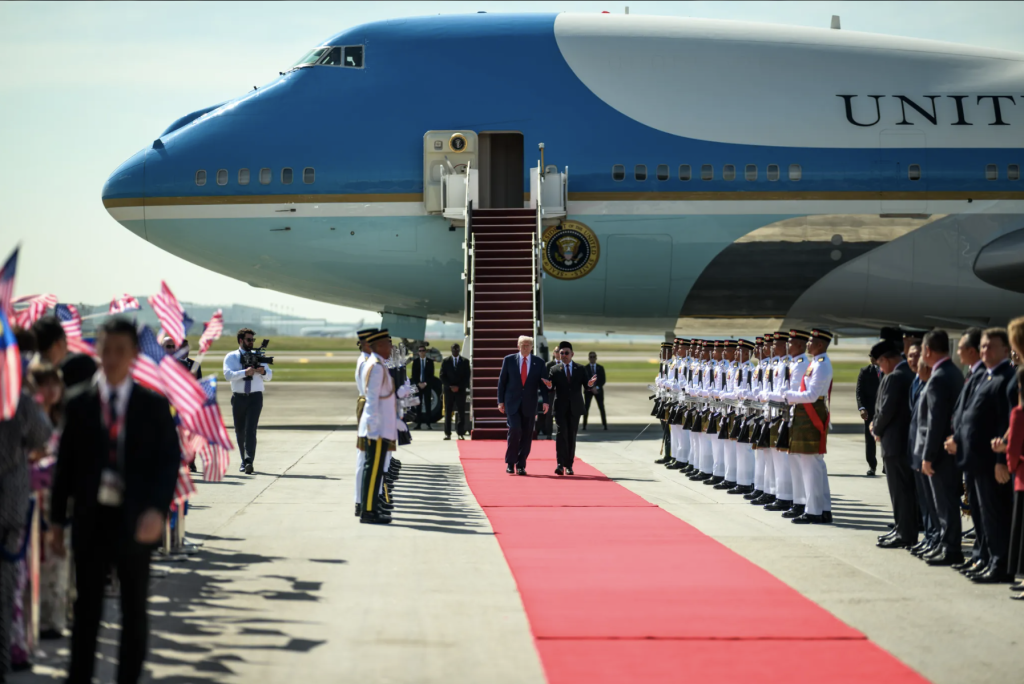Politics Out the Way! Towards a Deeper U.S.-China Green Cooperation—2023 China Focus Essay 1990 Institute First Prize Winner
- Analysis
 Katerina Yang
Katerina Yang  Ann-Alice Tichá
Ann-Alice Tichá- 08/23/2023
- 2
One of the two 2023 China Focus Essay Contest winners is the team of Katerina Yang and Ann-Alice Tichá. Katerina is a senior student at Johns Hopkins University majoring in International Studies and Economics, aiming to pursue a Master’s in international relations at Johns Hopkins SAIS after graduation. Ann-Alice is a recent graduate of the University of Oxford, where she studied in the Department of International Development, currently working towards a Master’s at Johns Hopkins SAIS. China Focus partnered with the Carter Center and the 1990 Institute to offer each winning submission $2000. Congratulations, Katerina and Ann-Alice!
The essay topic for the U.S.-China green technology is as follows:
Topic 2: China and the U.S. share an interest in carbon reduction. Yet both China and the U.S. are now following policies that discriminate against the other’s “green industries.” Are there changes in domestic renewable energy policies which can contribute positively to U.S.-China cooperation and which will result in global carbon reduction?
As the top two emitters of carbon dioxide globally, the U.S. and China play an indispensable role in global carbon reduction efforts. Nonetheless, from the trade war to the CHIPS act, rising geopolitical tensions have caused disconcerting damage to their bilateral relations, which also spilled over negatively to climate-related cooperation as well as the pace of global green transition. For instance, renewable energy trade dropped to near zero at the height of the trade war, and more recently, China once suspended all climate cooperation with the U.S. over Nancy Pelosi’s Taiwan visit. As U.S.-China relations struggle to find a floor, climate cooperation between the two emission giants risks becoming collateral damage.
To keep the global green transition going, it is important to assess potential pathways of cooperation moving forward. In fact, the recent developments in domestic politics of both countries have shown positive signs of cooperation on critical issues. Our analysis points to four focus areas for deepening bilateral cooperation: research and development (R&D), climate finance, bilateral trade, and local-level exchanges. More importantly, we believe joint leadership and trust in multilateral politics is necessary to achieve sufficient global carbon reduction amid geopolitical uncertainties.
Momentums at Home: Policy Shifts Brighten Cooperative Prospects
Domestic Climate Policy Shifts in the United States
In the US, new developments in domestic politics have refueled the momentum for climate cooperation. Climate cooperation at the bilateral level was largely disregarded by the Trump administration as he withdrew from the Paris Agreement and pushed for a fossil fuel-oriented energy policy. This took a turn with Biden’s administration making a decisive pledge to realize net-zero emissions by 2050. This was further substantiated by the historic Inflation Reduction Act (IRA), which prioritizes energy issues and promises $370 billion in investments to lower energy costs and accelerate clean energy technology development and business decarbonization.
Beyond the commitment of the current US presidency, partisanship regarding climate issues has also been replaced by greater interest alignment. Recent studies published by Brookings Institution show that policy actors from both parties, in fact, land on a similar position towards climate policy options. Such positions include supporting climate research, increasing investment in carbon capture and storage technology, exploring nuclear power alternatives, and adhering to the nationally determined contributions (NDCs) of the Paris Agreement. Although discord certainly remains in issues such as the speed and degree of fossil fuel phase-out and of federal-level solutions, there are two main reasons to stay hopeful. Firstly, scaling up clean energy production now represents the mainstream public view. For example, a recent poll by Pew Institute suggests that around 70% of Americans agree that renewable deployment should be prioritized. As such, the shift in public opinion will continue to add pressure on new fossil fuel projects and carbon-heavy investments. Secondly, clean energy initiatives like the IRA are altering existing political and economic dynamics. Over 80% of new renewable energy projects announced after the passage of the IRA were in districts held by Republicans. Red states like Texas, Kansas, and South Dakota are now the top clean energy producers in the entire country. Republican-affiliated beneficiaries of Democrats’ climate policy can potentially grow to be a pro-renewable lobbying force to push for more Republican engagement in the energy transition.
When jointly considered, there are clear signs that the U.S. is back at the table to keep the conversation on climate issues going, creating room for deepening climate foreign policy and cooperation with China.
Domestic Climate Policy Shifts in China
The Chinese central government has demonstrated continued policy commitment to carbon reduction and overall green transformation of the Chinese economy in its top policydocuments since the early 2010s. China’s policy commitment has gone beyond industry-level efforts as China incorporates climate change and energy transition into its long-term societal development strategies on central, regional, and local levels. The 12th Five Year Plan (FYP) and 13th FYP have each been unprecedented in terms of prioritizing environmental concerns, with the recent 14th FYP more specifically focusing on actionable targets for clean capacity installation in wind, solar, and nuclear power. In 2020, Xi Jinping’s announcement of the “dual carbon” goals –– carbon peak by 2030 and carbon neutrality by 2060 –– has become a strategic roadmap signaling continued momentum in both domestic transition and international cooperation, reinforced by the Two Sessions meeting in March 2023.
Moreover, China’s commitment goes beyond lip service to carbon reduction from the central government, as the energy industry has reached important milestones and shown tangible results both domestically and internationally. In the past decade, subsidies for the then nascent wind and solar energy generation industries in China and their respective supply chains led to a successful deployment and scaling of solar PV production, decreasing costs by around 80% globally. Furthermore, China has become the top exporter of solar cells and in the top three for wind turbines by total value. As such, China’s domestic policies are tailored to facilitate the rise of those renewable energy export industries as they are a good source for substantial economic growth during an economic downturn. Furthermore, China has shown more progressive reforms in intellectual property protection in order to foster domestic innovation, but also to reassure and attract foreign investors with high-end technology previously deterred by Forced Technology Transfer. More recently, as the foreign investment in China saw a slump since the end of the Zero-Covid policy, top leadership has spared no efforts to reinstate trust in China’s market by global businesses. This has been done with some success ––Tesla has recently announced its plans to establish a battery factory in Shanghai.
Overall, evidence shows that China has been serious about its continued commitment to a green energy transition. While some concerns regarding China’s market structure remain, Chinese leadership has demonstrated commitment to increase renewable investment and improve standards on the domestic market. As such, recent policy changes and the central leadership’s signaling suggests that the Chinese leadership is motivated and inclined to remain open to collaboration with the U.S in the field of carbon reduction.
The Prospect of a Greener US-China Cooperation
Cooperation is about identifying overlapping interest zones, and as the previous section shows, domestic policies in both the U.S. and China shed new light on the potential for cooperation moving forward. Four areas of cooperation at the bilateral level are worth particular attention, namely research and development (R&D), climate finance, international trade, and local policy design.
Firstly, in the area of R&D, the U.S. and China could build on their complementary strengths and a history of cooperation to ramp up research capacity in climate R&D through enriching existing partnerships. The two countries are top contributors to scientific research globally by R&D spending. They have also been each other’s largest partners, as seen in the growth ofjoint journal publications –– showing potential in further climate R&D collaboration. According to a joint report by several Chinese National Academies, the U.S. and China share a long history of clean energy R&D cooperation, which dates back to 1979. The two countries have already invested hundreds of millions of dollars on joint energy R&D projects by 2010. More recently between 2011 and 2020, the U.S.-China Clean Energy Research Center also supported multistakeholder R&D project collaborations with partners across academia, the private sector, and the public sector in China and the U.S. The two could double down on collaborative research on carbon capture and storage, electricity pricing and planning, efficiency improvement of carbon-heavy industries, renewables incentivization, as well as stabilization of intermittent power generation sources. Furthermore, the U.S. enjoys an edge on “early climate tech”, whereas China has a superior political economic environment for rapid scaling and deployment of available technology. As such, the two countries could lean into existing institutionalized partnerships, and each contribute their strengths to realize rapid deployment of fast-developing cutting-edge technology.
Secondly, the financing of the renewable energy transition is another potential arena for deepening cooperation. Finance is essential to mitigating and adapting to climate change, but the existing financial system and instruments still fall short at addressing the novel demand associated with renewable energy transition. China and the U.S. could come together to explore new tools for financing clean energy and investment in green tech globally to achieve carbon reduction goals. During the 2022 climate talks hiatus, climate finance was what brought scholars, business leaders, and experts together to convene a Track II Dialogue. Both sides highlighted the importance of collaboratively improving investment risk management, setting disclosure standards, as well as developing bankable cross-border clean energy projects. Finance is also an essential catalyst for new technological breakthroughs. According to the estimation of the International Energy Agency (IEA), over 50% of the technology needed to achieve carbon neutrality hasn’t reached maturity. Given the nature and scale of technology research, it would be most effective for both countries to jointly finance key technology fields.
Thirdly, energy is also a big part of the trade relationship between the U.S. and China. Between 2016 and 2018, as part of the trade war, the U.S. put in place import restrictions on solar panels from China. The Chinese government responded by imposing tariffs on energy-related raw materials and goods, including crude oil and LNG, from the US. However, as the Phase One Trade Agreement came to force, both sides began to extend exemptions to de-escalate the tension. The U.S. LNG sales to China rebounded rapidly from almost zero to 1.2 million tons since the fourth quarter of 2021.
Lastly, the U.S. and China both have large domestic markets and highly sophisticated industrialized systems, which provides common ground for multi-layered cooperation. From the public policy-making perspective, there is a possibility to formalize quiet diplomacy in the form of ministry-level communication on climate issues and deepen cooperation between local governments. As urban areas have disproportionately heavy carbon footprints, cities in both countries could employ existing mechanisms such as sister city pairs to exchange knowledge and policy insights. City-level motivation is strongly shared: more than 200 local governments in the U.S. have pledged to power their community with 100% renewables, and cities in China also deployed plans to transform their energy and transportation system. Moreover, at a non-governmental level, plentiful opportunities to institutionalize cooperation between universities and research institutes exist in the form of academic forums, collaborative labs, as well as joint talent training programs. Besides faster technological advancement, such initiatives would also diversify non-official channels for dialogue and build on the resilience of a greener cooperation between the two countries.
Multilateralism: The Next-Step Safety Option
Global carbon reduction cannot be achieved through bilateral U.S.-China collaboration alone. Effective multilateralism that balances out bilateral tensions and represents a diversity of stakeholders is also necessary. Current discussions of climate change still attribute actionable items and enforcement to respective governments of nation states. However, carbon reduction is a complex issue permeating all aspects of society, making it incredibly important that all stakeholders are brought together. Bringing more parties to could shift the focus from U.S.-China tensions to the collective environmental issue at hand. As such, effective multilateralism on the matter of climate would serve as a stabilizing factor and a safety net for global climate cooperation, even if the U.S. and China bilateral relations deteriorate.
We have seen this in practice: As part of the COP 27’s outcome, the U.S.-China Joint Glasgow Declaration released in November of last year boosted confidence towards energy and climate collaboration between the two countries. This statement represents a meaningful movement forward in taking collective action to tackle climate challenges. With new policy momentum at home, the U.S. and China need to set more actionable targets and improve the efficiency of existing multilateral mechanisms. The two could opt to take on leadership roles to facilitate global climate talks, address cross-cutting issues, and bring together different stakeholders from the developed and developing world as well as the public and the private sector. Admittedly, the U.S. and China relationship is currently at a rather challenging stage, but climate multilateralism in its true sense –– where stakeholders from governments, private, public, and civil sectors are all brought together –– could serve as a potential fallback option vis-à-vis direct bilateral cooperation on climate.
The Silver Lining of a Green Technology Race
Should geopolitical issues prove to have an insurmountable effect on US-China cooperation in a bilateral or multilateral sense, China and the U.S. could instead pursue strategic competition in the green sector. A “green energy race” could lead to a peaceful and productive competition, perhaps even expediting the decrease in overall global emissions. According to the Harvard Fairbank Center for Chinese Studies, the U.S. feels increasingly threatened in its global renewables leadership position, particularly in the area of green energy, where China has firmly assumed the lead. This has motivated the U.S. to adopt more climate-friendly energy policies to be able to better compete with China. This means that even in the lack of bilateral or multilateral China-U.S. collaboration on climate, a “clean energy race” between the two countries could still result in a positive resolution of bilateral tensions as well as global carbon reduction.
Conclusion
In the present, the climate crisis is easily the simplest and the hardest issue in global governance ––the solutions are known, but only few are willing and able to do what it takes. There is room for optimism: both the U.S. and China have shown increasing carbon reduction commitments through changes in their domestic policies to transition their respective societies as efficiently as possible. Given a new modern momentum, rationalism seems to be on the rise, with four potential areas of potential bilateral collaboration: R&D, climate finance, international trade, and deepening multilayered cooperation. Furthermore, both countries’ central roles in global governance stresses the importance of going beyond the bilateral lens to work on improving the efficacy of multilateral cooperation. More importantly, a deeper multilateral arrangement would be crucial to build resilience in case of a freezing bilateral relation. The very recent IPCC’s sixth assessment report expresses concerns but also hopes. There is still a large gap between existing efforts to combat climate change and meeting the 1.5-degree Celsius climate goal. Nevertheless, multiple actionable paths are available for countries to catch up, but they would require determination, perseverance, and leadership transcending great power politics. Climate action should be made a nonnegotiable obligation before it is too late to save the Earth and mankind from the fatal consequences of global warming—and it should happen now.








2 Comments
[…] Politics Out the Way! Towards a Deeper U.S.-China Green Cooperation—2023 China Focus Essay 1990 Institute First Prize Winner […]
[…] Politics Out the Way! Towards a Deeper U.S.-China Green Cooperation—2023 China Focus Essay 1990 Institute First Prize Winner […]